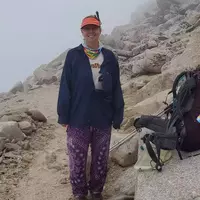Empowering Earth Science Educators: The Impact and Innovation of NAGT's K-12 Committee
published Aug 11, 2025 8:10amTeaching Earth science can be an isolating experience, but it doesn't have to be. The NAGT K-12 committee is building a nationwide network of support, resources, and inspiration to help educators bring Earth science to life in every classroom.
In the spring of 2022, the National Association of Geoscience Teachers (NAGT) formed an Ad Hoc K–12 Committee to deepen the involvement of K–12 educators in the organization and generate new, innovative ideas to better support them. The committee was established in recognition of the diverse needs of K–12 Earth science teachers. Many of these teachers are the only Earth science educator in their school, or may be teaching Earth science standards without formal academic training in the subject.
Since its founding, the K–12 Committee has convened regularly and engaged in collaborative work with other educational and scientific organizations (GSA, NESTA, AGI, etc.). These efforts have focused on creating strategies to assist both certified Earth science teachers and those from other disciplines who find themselves responsible for teaching geoscience content. Through the sharing of professional resources, community-building initiatives, and the promotion of interdisciplinary teaching approaches, the committee strives to make Earth science education more accessible and effective in classrooms across the country.
One of the committee's ongoing initiatives includes contributing to Earth Science Week, an annual celebration that promotes geoscience awareness through thematic resources and activities. Each year, the committee curates relevant educational materials that align with the designated theme. For 2025, the theme is "Energy Resources for Our Future," and the K–12 Committee is actively gathering instructional tools and lesson plans that help educators address this critical topic in engaging and age-appropriate ways.
The committee has also extended its impact by supporting NAGT's presence at major national conventions such as those hosted by the Geological Society of America (GSA) and the National Science Teachers Association (NSTA). In the past year, the committee hosted asession at GSA Anaheim to showcase educator-developed resources, including open educational resources (OER) that promote more accessible and equitable Earth science instruction. Furthermore, Callan Bentley (Northern Virginia Community College) and Edith Rojas Salazar (College of the Desert) led a three-day field trip across Southern California, designed specifically for educators. Throughout the trip, they provided participants with tools and strategies to help teach the region's geology more effectively in their own classrooms.
Looking ahead, at GSA San Antonio, K–12 Committee member Sabrina Ewald will lead a field trip, Energizing the Future: Innovative Energy Production and Environmental Stewardship in Texas, exploring the connection between Earth science and energy resources in Texas. This field trip demonstrates how regional geoscience topics can be turned into engaging, real-world learning opportunities.
In an exciting milestone this past year, NAGT hosted its first Outstanding Earth Science Teacher (OEST) Sharathon webinar, where a group of OEST awardees shared innovative pieces of their curriculum with the broader teaching community. This event marked a significant step in amplifying peer-to-peer learning and spotlighting exemplary classroom practices. The success of the Sharathon would not have been possible without the guidance and support of Meghan Lindsey Cook, OEST coordinator, and the dedicated NAGT webinar team. If you are interested in presenting your curriculum at a future K–12 Sharathon webinar, please contact Meghan Cook at cook431@pnw.edu. To view the recordings and curriculum shared by the OEST presenters, please visit the Outstanding Earth Science Teacher (OEST) Virtual Share-a-thon website.
As the needs of K-12 Earth Science educators continue to evolve, so does the vision of the NAGT K-12 Committee. We envision this committee growing with a dedicated K-12 Division within NAGT to offer sustained support, professional development, and leadership opportunities tailored to educators across grade levels and teaching contexts. This evolution would allow for greater visibility, representation, and resource development specifically aligned with the realities of K-12 classrooms. Several forces drive this change: the increasing urgency to teach climate and Earth systems science, growing demands on educators to teach interdisciplinary content often outside of their subject training, and a push for more equitable and inclusive science education. These trends underscore the importance of empowering teachers with accessible, high-quality resources and a strong professional community.
The broader community can support this growth by amplifying the voices of K-12 educators, participating in collaborative projects, and helping bridge the gap between academic geoscience and classroom instruction. As we consider establishing a K-12 Division, we invite support, feedback, and partnership from across NAGT. We commit to serve the K–12 educators. By fostering community, sharing practical resources, and highlighting exemplary teaching, the K–12 Committee plays a vital role in ensuring that Earth science education is vibrant, inclusive, and empowering for all teachers and students alike.
Comment? Start the discussion about Empowering Earth Science Educators: The Impact and Innovation of NAGT's K-12 Committee




![[creative commons]](/images/creativecommons_16.png)